LEVEL 1
FULL SUN
Full sun for best fruit production
pH
Neutral 5.5-7.0
FEEDING
Nitrogen, phosphorus, potassium
PLANTING
Fall through spring, October to April
Punica granatum
Pomegranates have a history dating back to the early Bronze age. It was a significant provider of food and medicine across cultures and civilizations of the ancient world. It was found growing from North East Turkey across to Afghanistan. It has since taken residence in a wide variety of climates worldwide.
Botanically speaking a pomegranate is a berry, the trees are monoecious meaning they have both male and female flowers on the same tree.
It is considered a powerful superfood due to its high antioxidant content and disease-preventing abilities.
VARIETIES
- Eversweet: Self-fruitful. Eversweet is considered a white variety because it does not have red staining juice. It is very sweet, even when not completely ripe. The arils are very soft, with almost no seed. Harvest late summer through fall.
- Parfianka: Common variety in Arizona. Self-fruitful. In some tastings, rated as the best-tasting variety. Large fruit with deep red soft arils. Good acid balance. An excellent variety for juicing. A vigorous upright plant that is a heavy producer.
- Desertnyi: Loves the Desert! Originally from Turkmenistan. An excellent variety with soft seeds. It has a light orange outer rind and deep red arils. Citrus notes and a sweet-tart balance.
- Wonderful: Loves hot climate. Self-fruitful. Showy large flowers followed by large purplish-red fruit that is very tangy. Not a very hard seed.
- Eve: Self-fruitful. Described as a cherry slurpy flavor, bright red fruit has deep red arils inside. Ripe in October to November.
** There are dwarf pomegranate trees which are very attractive and attract many beneficial insects and hummingbirds. They will produce tiny inedible fruit.
Root Stock
No specific rootstock info.
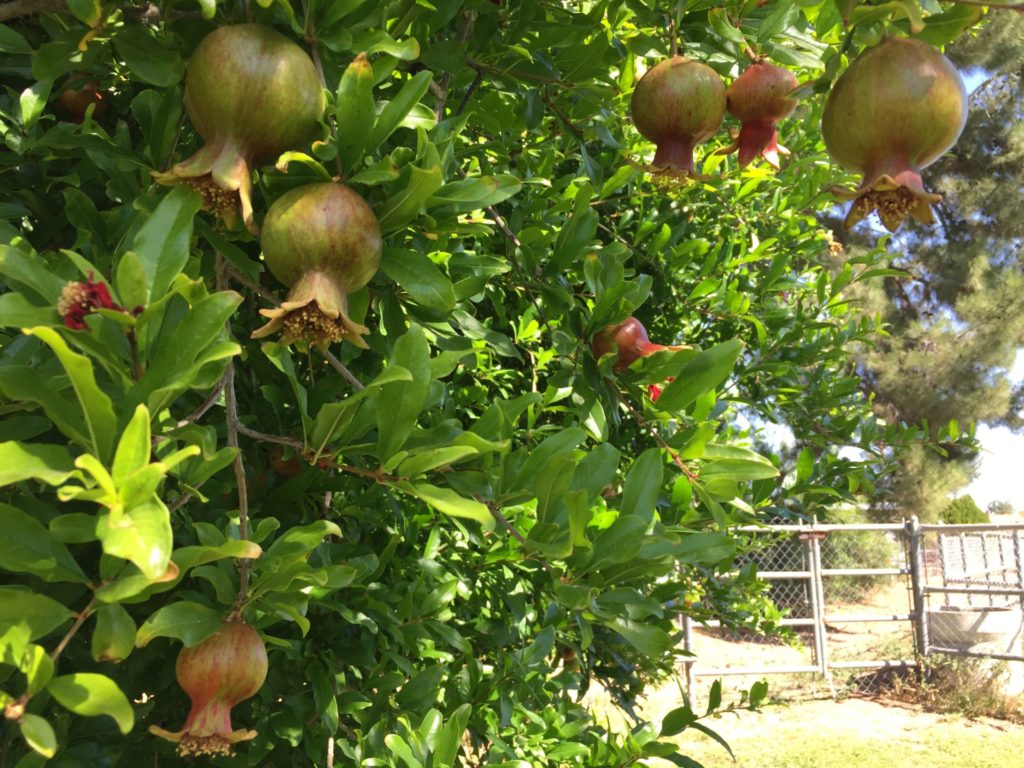
HOW TO PLANT
- Potted pomegranate trees can be planted in fall through winter(Oct-Jan) and also in Spring from January until April. Bare-root trees are available from January to February.
- Plant your Pomegranate tree according to the instructions for bare roots or a potted tree found in the How To Plant a Tree Article.
- Before placing it in the hole, find the graft on the tree and face the graft East to protect it from the harsh West Sun.
- Do not mound soil up to the trunk. The root ball should sit just barely exposed in relation to the soil line.
- Once the planting hole has been backfilled, add in companion plants and mulch, or add 3-4 inches of a mulch layer to protect the soil and conserve water.
- Water well, and keep the tree moist without drowning the roots. The detailed article on how to plant a tree, as referenced above specifies how to water newly planted trees.
- If you are planting a bare root, prune off the top third of the tree. This may seem harsh but this helps the tree’s energy to go into producing a strong root system rather than maintaining the top growth.
- All tree trunks are very susceptible to sunburn in our Phoenix desert climate. The trunk will need to be protected, we recommend Ivy Organics 3-in-1 Plant Guard. Use the code DESERT10 for 10% purchases.
- Young pomegranate trees may need to be protected from the harsh summer sun with shade cloth for at least the first summer, while they get established. Thereafter they will be able to handle full sun.
- Prune in late winter approximately January. Remove branches that are crossing and some of the excessive twiggy growth. Pruning tips
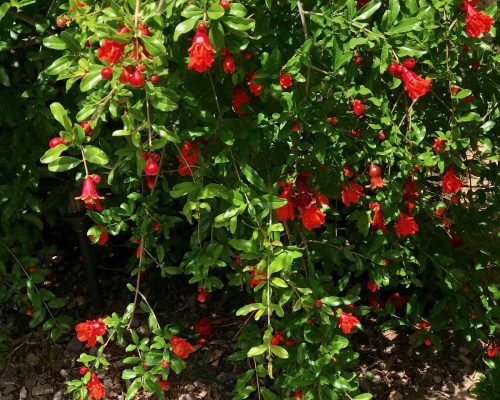
FEEDING AND FERTILIZING
Feed once a month with an organic fertilizer such as Earth’s Original Organics.
In fall and spring, pom trees should receive a fertilizer high in phosphorus such as the Magic Bloom. The tree will take up the phosphorus to support healthy and abundant spring blooms.
Pomegranates are tolerant of a range of pH’s, like most plants they will benefit from the addition of sulphur to lower the pH to a neutral range.
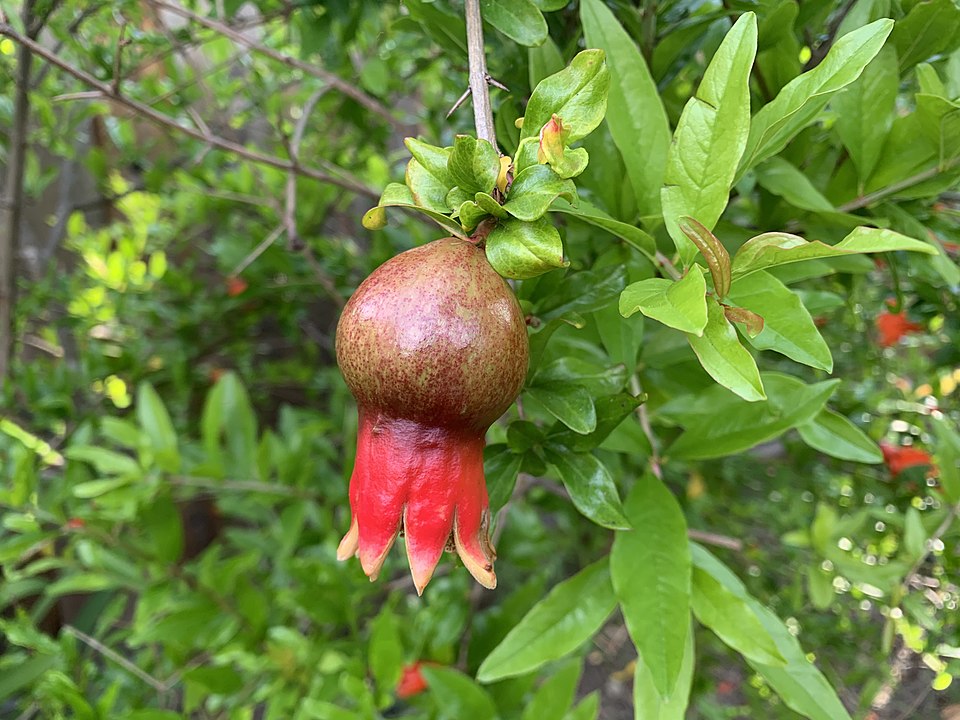
WINTER/SUMMER CARE
No extra care needed.
POSSIBLE ISSUES
Aphids
Like many gardening plants, pom trees can be plagued with aphids and other soft-bodied insects. Monitor aphids and remove infected areas by hand, or encourage beneficial insects such as lacewings, ladybugs, and assassin bugs.
Leaf-Footed Bugs
The biggest issue gardeners have growing pomegranates are leaf-footed bugs. The insects pierce the fruit to feed on the juices. It is not easy to see on the outside of the fruit but appears as brown spotting on the inside. The arils of damaged fruit are dehydrated by the bugs. In addition, pathogens can also enter the fruit causing rot. Spray trees thoroughly after fruit set with kaolin clay to discourage leaf-footed bugs, Additionally, bag each fruit with organza bags. Before winter remove any remaining fruit on the trees to discourage overwinter leaf-footed bugs.
Fruit Splitting
This can be caused by irregular watering and tends to be common with late monsoon rains and rainfall into October. Use 3-6 inches of mulch to help regulate water and avoid splitting. If the fruit is ripe and does split, harvest immediately to discourage insects.
Ants
Diatomaceous earth can be used at the base of the tree, but is only effective if dry. Gardeners may also want to try using vaseline around the trunk of the tree to trap ants. Tanglefoot is sometimes used, however tanglefoot can also trap birds and geckos, so is best avoided. IV Organics 3-1 plant guard is the best defense.
Birds
Birds commonly leave peck marks in ripe or nearly ripe figs. Use fabric tie string bags to protect fruit. Green colored bags are also useful as they trick birds into believe the bag does not contain ripe fruit. Birds are surprisingly crafty and are able to remove bags even when tied on if they are motivated enough.
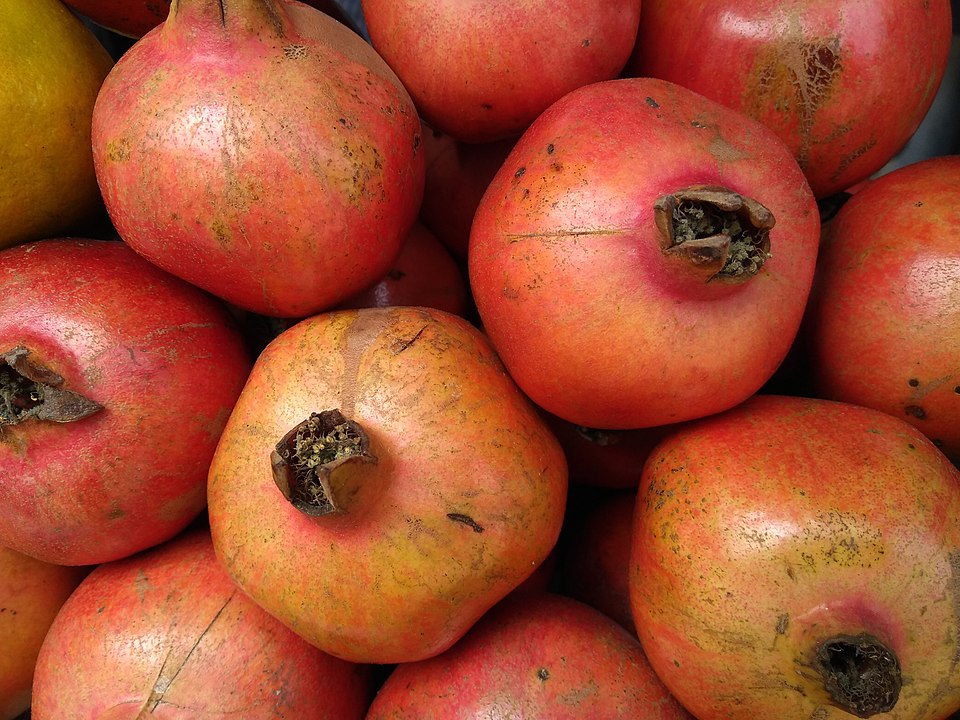
COMPANIONS
All flowers and herbs make good companions for pomegranates. Plants that attract beneficial and predatory insects are excellent to help control pests. Melons and berries are also good companions. The allium family plants are also beneficial companions.
In a permaculture tree guild, comfrey, yarrow, coreopsis, and dandelion could be used.

HARVESTING
Pomegranates will start to ripen in October. Normally birds trying to get into them are a good sign it is time to pick them. Ripe pomegranates will have dark aril inside unless they are one of the white varieties. See the video below showing how to cut a pom and separate the arials.
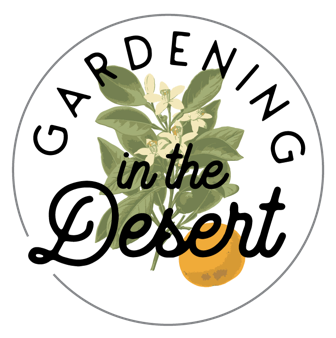
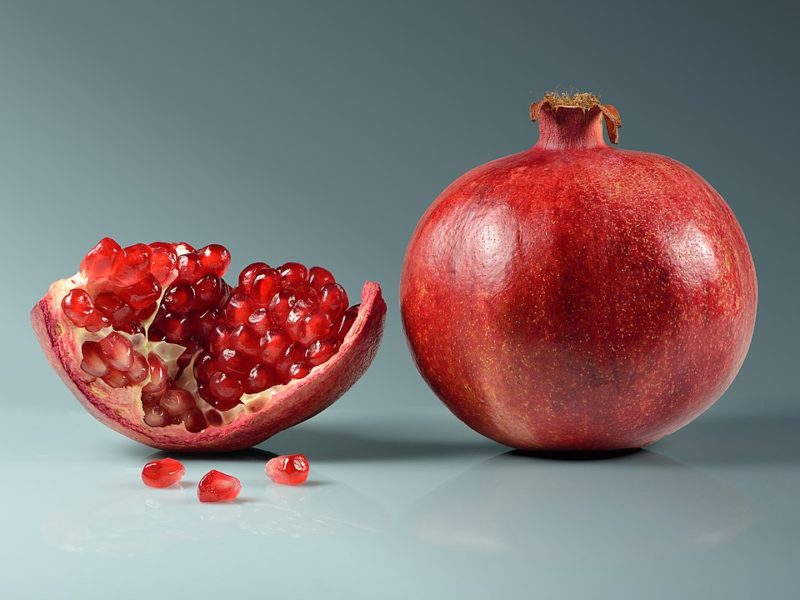
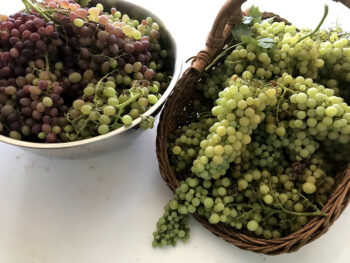
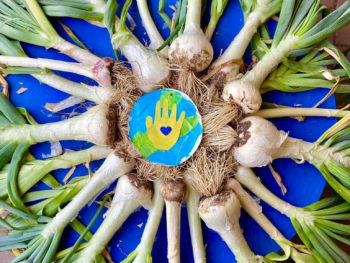
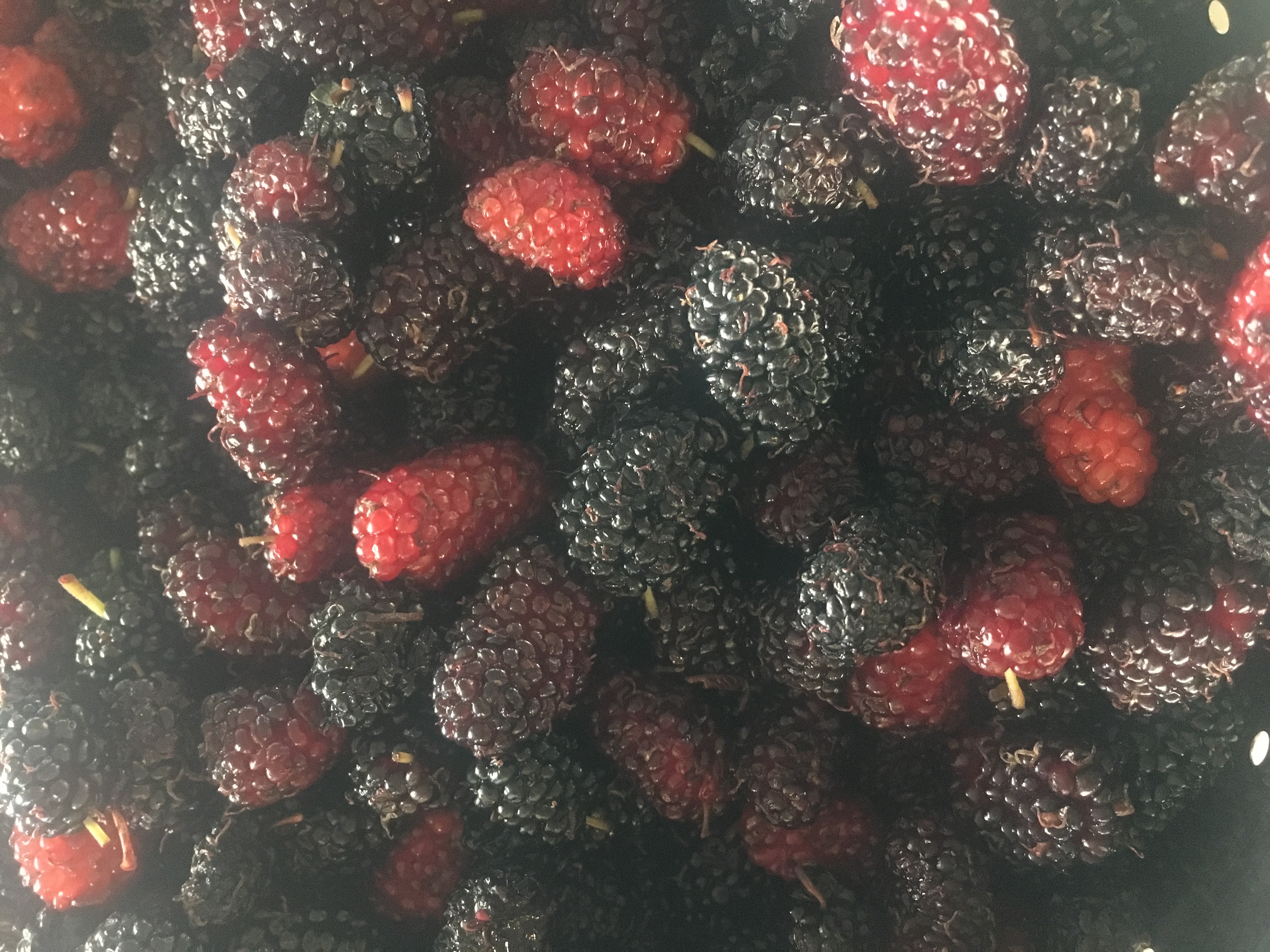
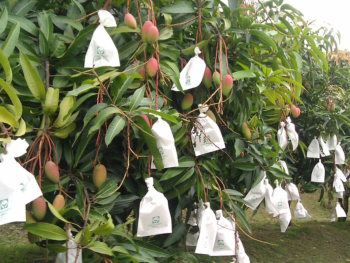
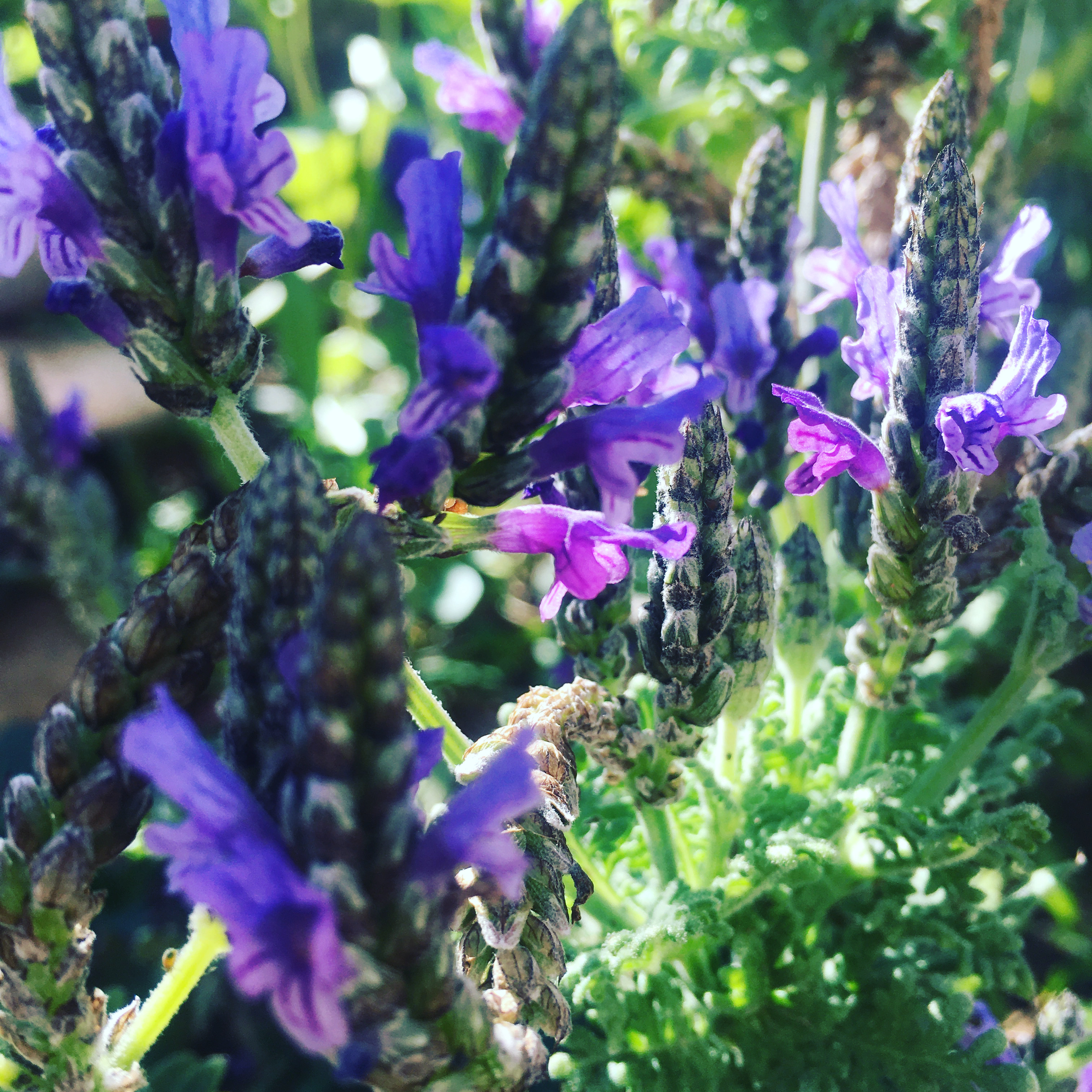
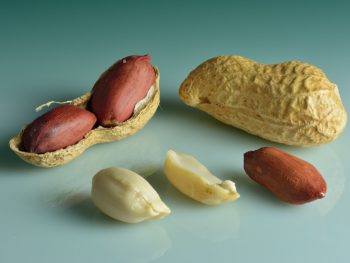
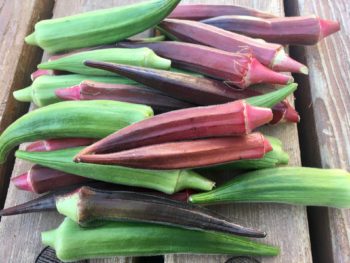
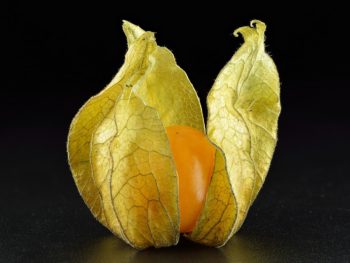
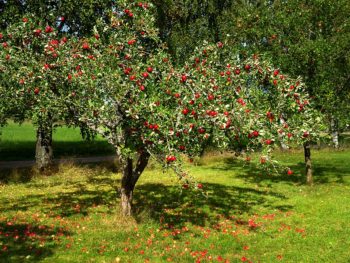
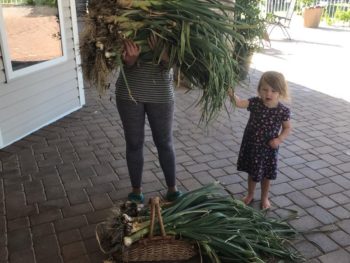
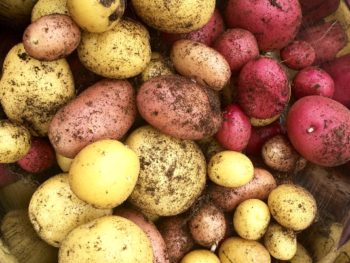
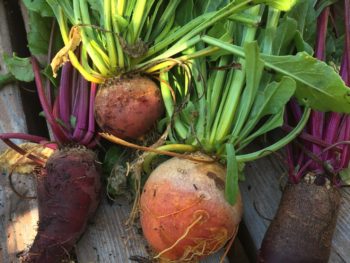
 How to Grow Apple Trees In The Desert
How to Grow Apple Trees In The Desert